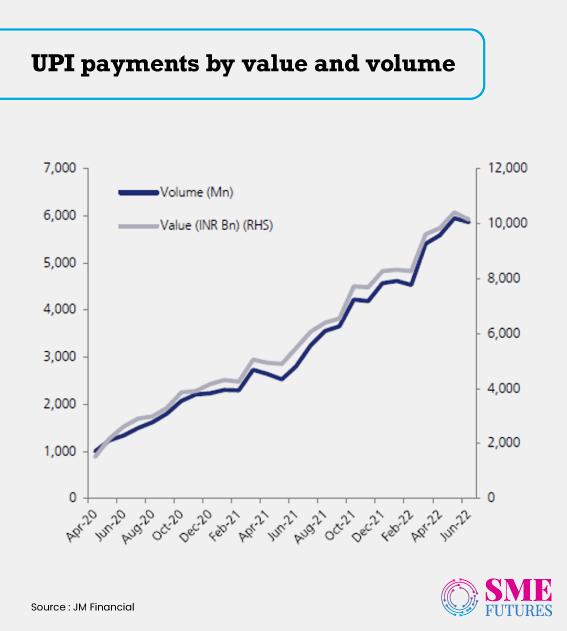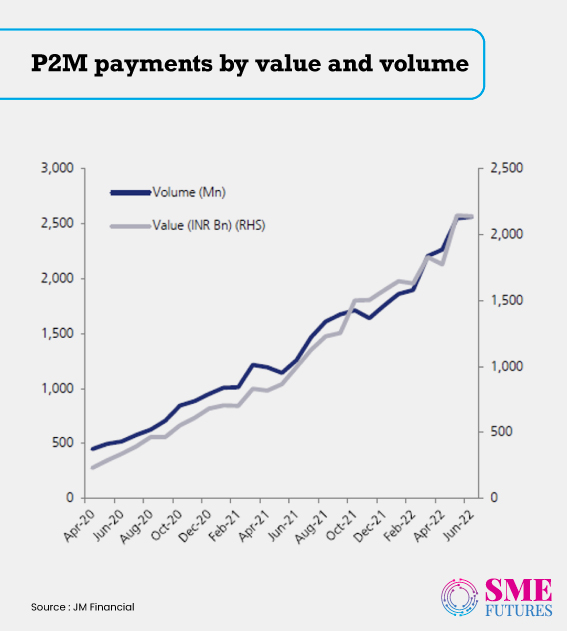Open Network for Digital Commerce (ONDC), the government’s long-awaited initiative, will soon commence its beta-testing phase in limited cities. The network aims to fill the gaps between sellers and consumers while trying to uplift small-scale enterprises along the way. This government initiative is an attempt to weaken the duopoly of Amazon and the Walmart-owned Flipkart.
ONDC focuses on interoperability and provides benefits across all the platforms linked to its network. Giving more exposure to small-scale D2C businesses that can’t compete at the digital level due to a lack of expertise and financial support. To understand this better, think of it in this way: Suppose XYZ is a brand that is exclusively available on Amazon and is thus only displayed on the Amazon website. If the XYZ brand joins the ONDC network, its items will then be displayed across every platform linked to it. ONDC is, hence, not a platform but instead a network to connect on for businesses to showcase their products on a user base which has a greater reach across many apps.
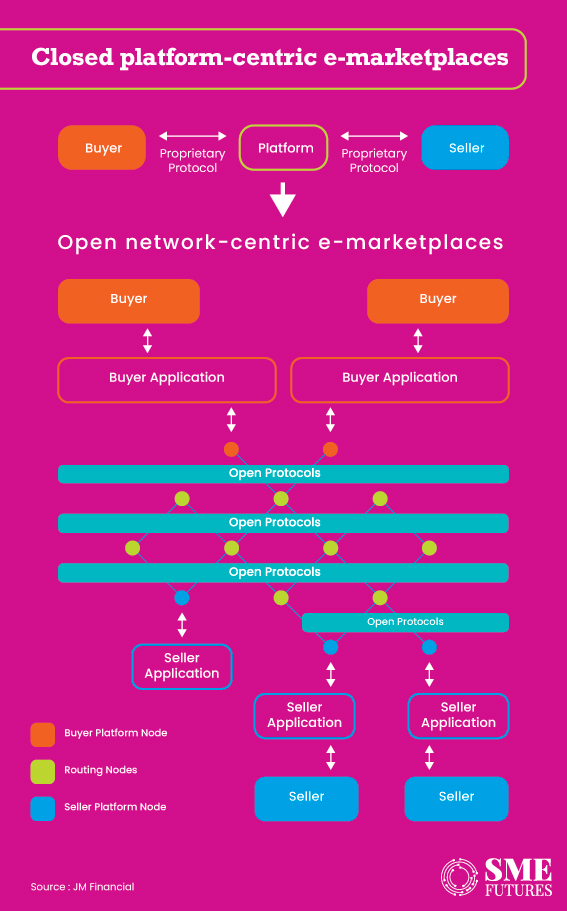
“ONDC will be a game changer. It will create a level-playing field and offer a democratic platform to the players and will be instrumental in systematically dismantling the hegemony of the large horizontals. It will usher the Indian digital retail sector into a new era by seamlessly connecting merchants, customers, vendors, financers, and much more,” says Ridhima Kansal, Director, Rosemoore.
“A potential benefit of ONDC is providing retailers with a broader range of opportunities. Small businesses, SMEs, and the micro and small traders will benefit from this programme by the opportunities that will be created for them, especially in the Tier 2 and Tier 3 cities. This will curb digital monopolies by helping small businesses to get on online platforms. By matching the consumer’s demand with the nearest source of supply, it will increase the audience for any retailer’s products. Due to its ability to allow consumers to find any seller through a compatible platform, it has the potential to disrupt the existing market,” says Vikram Ramasubramanian, Partner, Inflection Point Ventures.
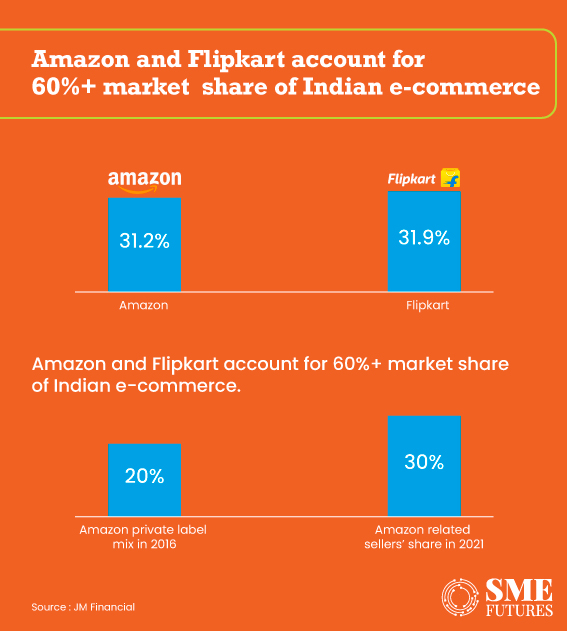
While the success of ONDC can possibly disrupt the duopoly of Amazon and Flipkart, it has other goals that it must accomplish as well. The small retailers and MSMEs have long accused the big giants of abusing their monopoly by promoting owned private label brands and indulging in data misappropriation, predatory pricing and exclusive agreements. These have been some of the main reasons for the inception of ONDC.
UPI Vs ONDC: What are the differences and the similarities?
ONDC and UPI are quite similar to each other in the sense that the buyer and seller can transact without being on the same platform. Both are based on an open protocol which enables them to facilitate this process.
Also Read: Web3 in India, a new internet in the making
UPI is an instant real-time payment system that enables an immediate fund transfer between any two banks via a mobile platform. It has the power to merge multiple bank accounts in a single mobile device for seamless fund transfers. UPI was successful as it provided multiple benefits like convenience, a quicker process for the transfer of funds, interoperability and a faster resolution time, thus helping both the buyer and the seller by providing a seamless experience to them.
“ONDC will facilitate e-commerce just like UPI has done for online payments. Small merchants will be able to publish their goods and offer credit to buyers smoothly, which allows all sellers and platforms to be on an equal footing and it lets the consumers decide where they want to buy from,” Ramasubramaniam points out.
The major similarities between ONDC and UPI are that firstly, they are both not a platform or a product but a network that facilitates transactions and secondly, both prioritise MSMEs over large businesses. However, UPI is a product-led solution while ONDC requires the movement of products. Also, the transaction for UPI payments closes immediately while ONDC transactions can take a lot more time.
Is ONDC the UPI moment for e-commerce?
UPI democratises the payment ecosystem by making payments and transactions more convenient. ONDC plans to do the same within the e-commerce space. ONDC wants to create an e-commerce ecosystem where the small players are also connected to it. This initiative has been taken to help the economically weaker section of the public who run small businesses and don’t have any online exposure. This has been done by connecting retailers and buyers under one umbrella to create an ecosystem where purchases can be made through any buyer side application.
Also Read: Bumper automobile sales during Navratri season: FADA
“ONDC will be the UPI moment for Indian digital retail by offering a single coherent platform to everyone. The e-retail industry in India is valued at $55-60 billion currently but it has huge potential and can reach $ 350 billion by 2030. As the industry will expand at an unprecedented pace, a gigantic and democratic platform such as ONDC will be pivotal for its growth,” Kansal asserts.
However, just like UPI, ONDC too will have some problems. With billions of transactions being done through UPI on a daily basis, it is in dire need for some regulation and checks. Efforts are being made in that direction but there are still several problems that need to be addressed, such as the dominance of a couple of players, the concentration of power within the National Payments Corporation of India (NPCI), and the payment system’s financial viability.
Potential roadblocks for ONDC
There are many aspects of the e-commerce arena that ONDC has to deal with. Promoting SMEs and MSMEs is good and is needed as well but who is going to take the blame if things don’t go the right way. Some of the major problems that ONDC will face and that were predominantly encountered during its testing phase are:
- How to build the customer base?
ONDC’s focus on interoperability and its intention to help out SMEs and MSMEs by giving them online exposure is a great step in bringing digitalisation to these businesses. But what about the buyers?
E-commerce platforms have predatory pricing and always give out a lot of discounts and offers to their customers. ONDC will have to develop innovative ways to attract customers. It will have to offer something that is unique, something that will compel buyers to join in on the ONDC network.
- Who will pay the costs?
ONDC’s initiative to bring small scale businesses and neighbourhood shops into the online arena will come with quality and other product-related issues. As these neighbourhood shops and micro businesses have no quality or service checks to maintain, they will have to deal with a lot of customer fallback. In such a situation, who will be responsible? Who will be answerable to the customers’ if they have a bad experience? How will ONDC bring a change in these experiences?
Also Read: India’s space launch segment to propel to $13 bn by 2025: Report
These are some pertinent questions that must be considered.
- How secure is the data?
Under ONDC’s network policies, 3rd party periodic audits will be undertaken to keep the network in compliance with various policies. However, with such a large user base of retailers, including that of private organisations, it is yet to be seen how effective these audits will be.
- True Interoperability
Transaction details are a way to determine and learn consumer behaviour. For now, the consumer data resides with the buy-side app only. ONDC’s framework still has a lot to work on regarding the systematic storage of data and its usage. True interoperability can only be attained when data exchange is facilitated.
The future of ONDC
In the near future, Artificial Intelligence (AI) and Machine Learning (ML) will play a large role in changing the landscape of e-commerce. Leveraging on the daily advancements made in the field of science and technology can give an edge to the ONDC network.
“The effectiveness of the implementation and the parts of the business that the users choose to adopt will determine ONDC’s e-commerce enterprises. For the start-ups that chose to get on the platform, it should leverage AI to develop marketing tools that will convert customer enquiries into sales. With AI breakthroughs being made every day, there will be a concurrent improvement in anticipating demand and supply across PIN codes, logistics and catalogue curation,” Ramasubramanian avers.
Also Read: It’s time for a gold rush but the import duty hike is posing some concerns for the gold retailers
For a successful run, the network will have to generate a lot of hype and hoopla in order to attract consumers. For which, they will need to take a deep look into how to utilize the options that they have in hand. Should they go the organic way, or should they spend a lot of money on promotions?
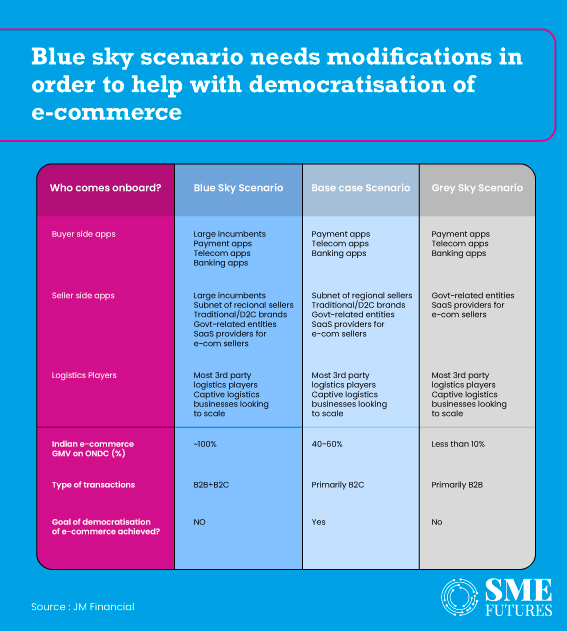
“A few questions still remain unanswered about how ONDC will rope in the consumers. The first being, how is it established that a similar product is listed first? Platforms that want to be at the top may pay the government. Second, will ONDC merely serve as a facilitator, or will it also act as an enabler? Will the integrity of such contracts be maintained by ONDC in order to gain the trust of the new sellers? For instance, if a seller places their goods directly on ONDC and then finds a logistics partner within ONDC?,” Ramasubramanian points out.
Businesses have pinned their hopes on the ONDC network which certainly has the potential to change the current landscape of e-commerce in India. There is still a lot of ground that ONDC needs to cover but with each step, it inches closer to its goal.
Also Read: Govt launches Credit Guarantee Scheme for Startups for collateral-free funding
“The execution of ONDC will be a bumpy ride. It is a vast project, and its implementation will have multiple challenges. Bringing so many stakeholders, including millions of merchants, customers, vendors, and suppliers on to one platform is not an easy task. Meanwhile, it is also important to educate a lot of small vendors and merchants about these platforms. Because, despite the momentous shift that has been witnessed in recent times towards the digital arena, the overall knowledge about digital commerce in India is still limited. With ONDC, we would need to have some patience. It is a mammoth project and will need some time and a lot of effort,” says Kansal as she signs off.


